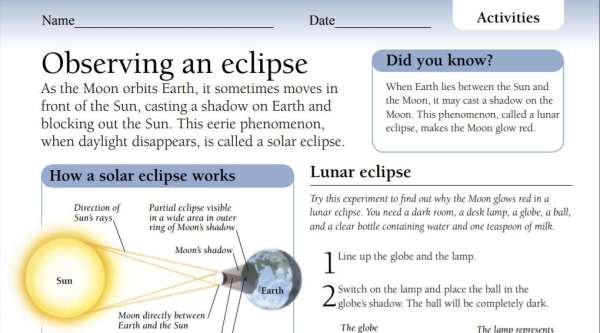Help students visualize a lunar eclipse and a solar eclipse with the diagrams in this printable. After reading about eclipses, students will sequence the stages of a solar eclipse. Then, they will try an experiment to find out why the Moon glows red in a lunar eclipse.
Excerpted from
Eyewitness Workbooks: Stars & Planets
This workbook helps kids take their knowledge of stars and planets to the next level. It includes 48 full-color pages, a turn-and-learn info wheel, and special carrying folders.





